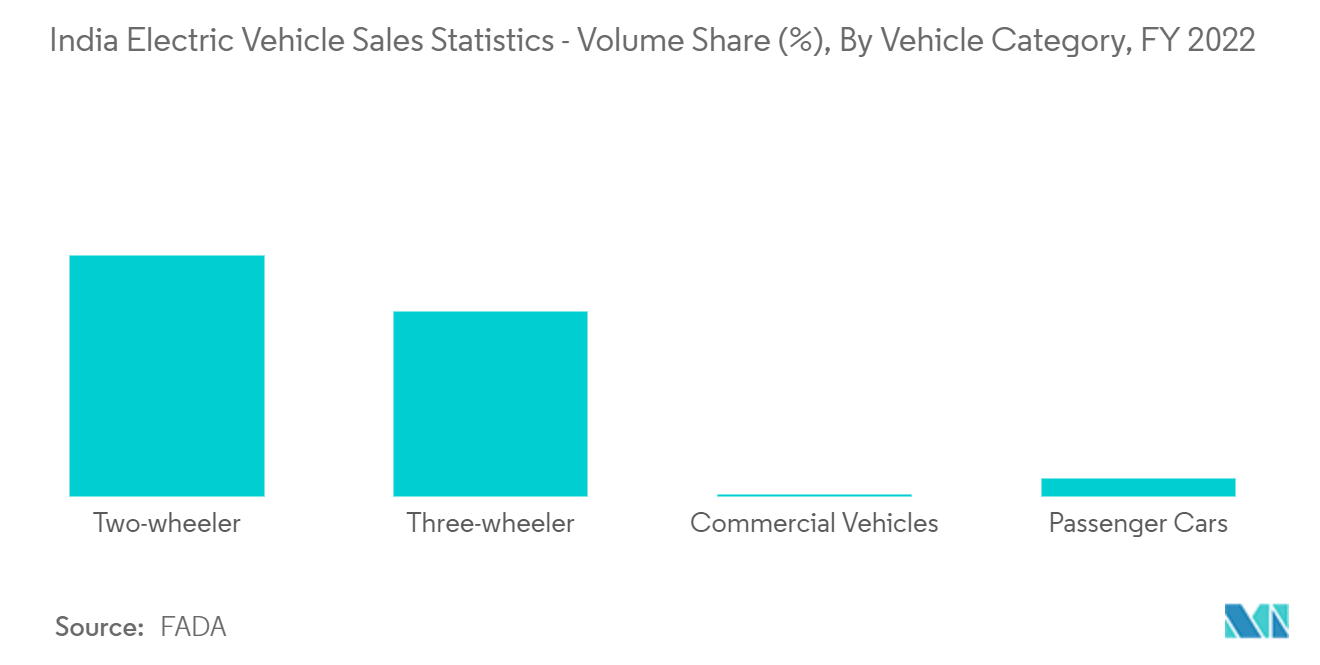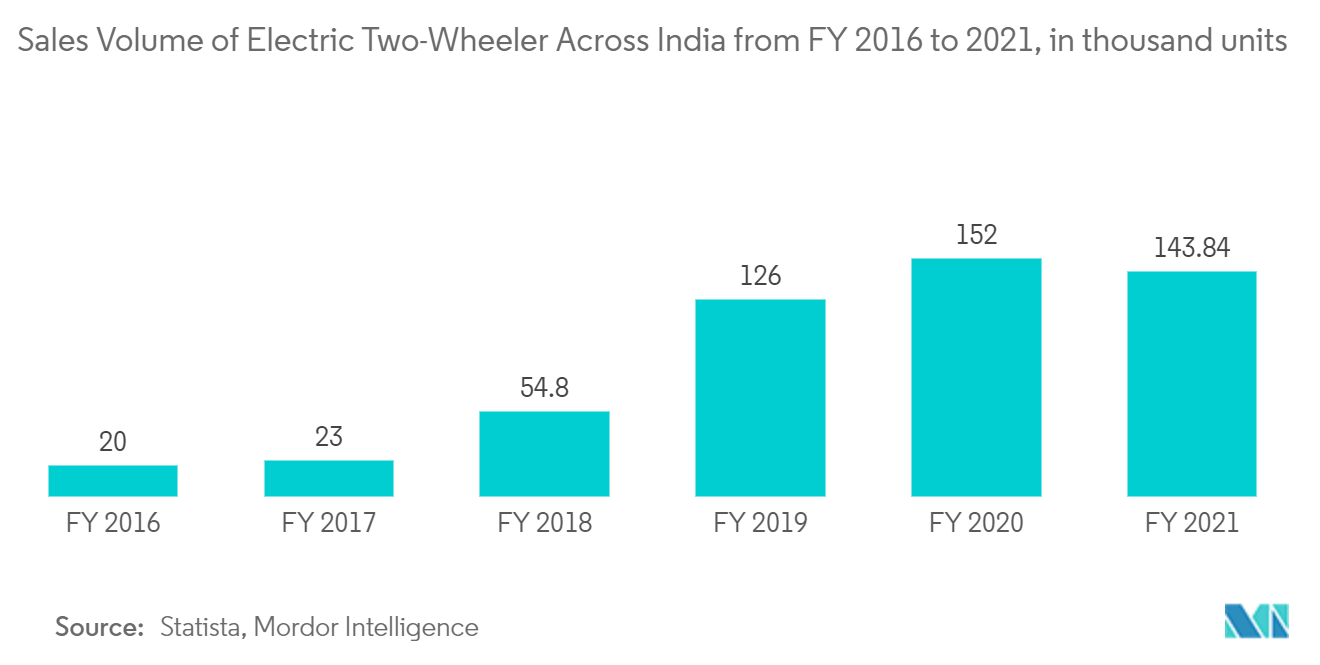Market Trends of India Battery Swapping for Electric Two-Wheelers Industry
This section covers the major market trends shaping the India Battery Swapping for Electric Two-Wheelers Market according to our research experts:
Rising Focus of Manufacturers on Improving Lithium Ion Batteries Expect to Enhance Demand
Battery swapping for electric vehicles is expected to gain significant momentum over the coming years owing to rising consumer awareness about the benefits offered by it. Especially lithium-ion battery swapping solutions offer numerous opportunities for players operating in this segment in India as these swappable batteries address key challenges such as range anxieties and long refueling times. Such factors are expected to contribute to the growth of the market over the coming years. Further, with the rising penetration of lithium-ion batteries for electric two-wheelers in India, the key players operating in battery manufacturing lithium-ion are actively participating and contributing simultaneously to the growth of battery swapping in the country.
For instance, in September 2022, Renon, a Surat-based li-ion battery storage company, launched Groot, its smart swappable battery for electric two-wheelers. In order to build this li-ion battery pack, NMC chemistry is used. It is suitable for low-speed and medium-speed electric cars. This pack is made up of phase change material, which can be used for thermal management. In August 2022, Komaki, an EV company, announced the launch of fireproof batteries for India in response to the decline in sales of electric two-wheelers. According to the company's website, it introduced LiFePO4 lithium-ion ferro-phosphate battery technology on the market. These batteries are fire-resistant.
Further, the development of lithium-ion batteries coincided with a higher growth rate in sales volume over the past few years. According to FADA, electric two-wheeler sales volume in India in FY2021 witnessed a surge of around 463.61% than FY2020 and around 831.20% in FY2020 to the previous year. Such an optimistic outlook for the market tends to offer new opportunities for lithium-ion battery manufacturers. It is expected to propel the development of battery-swapping stations in India in the future.

Growing Electric Two-Wheeler Sales in India to Augment Market Growth
Electric two-wheelers in India have witnessed significant growth in recent years. Cost-effective solutions offered by electric two-wheeler manufacturers and an increase in subsidies offered by the government to encourage faster adoption of electric mobility and battery swapping stations in the country, along with the launch of new models, are expected to increase electric two-wheeler (e-2W) penetration anticipated to augment the demand in the market.
For instance, in April 2022, Niti Aayog, the in-house think tank of the Indian government, released a draft policy for battery swapping (BS) for two and three-wheelers. The vision of the policy as stated in the draft is to catalyze the adoption of electric vehicles (EVs) by improving the efficient and effective use of scarce resources such as public funds, land, and raw materials for advanced cell batteries for the delivery of customer-centric services.
In July 2021, the government announced increased subsidies for electric two-wheelers in India and revised the timeline for the FAME II scheme until March 2024. Under the revised subsidy, electric two-wheelers can get INR 15,000 per kWh as a subsidy.
The Government of India, through various policies, has helped achieve sustainable mobility. By 2030, all government vehicles will be electric. By 2030, it plans to phase out all commercial fleets and supply vehicles powered by fossil fuels in every city. The coordination of consumers and commuters is necessary to implement these policies. With appropriate awareness and the rising penetration of electric two-wheelers across the country over the coming years, it poses attractive opportunities for players operating in the battery-swapping segment in India.

